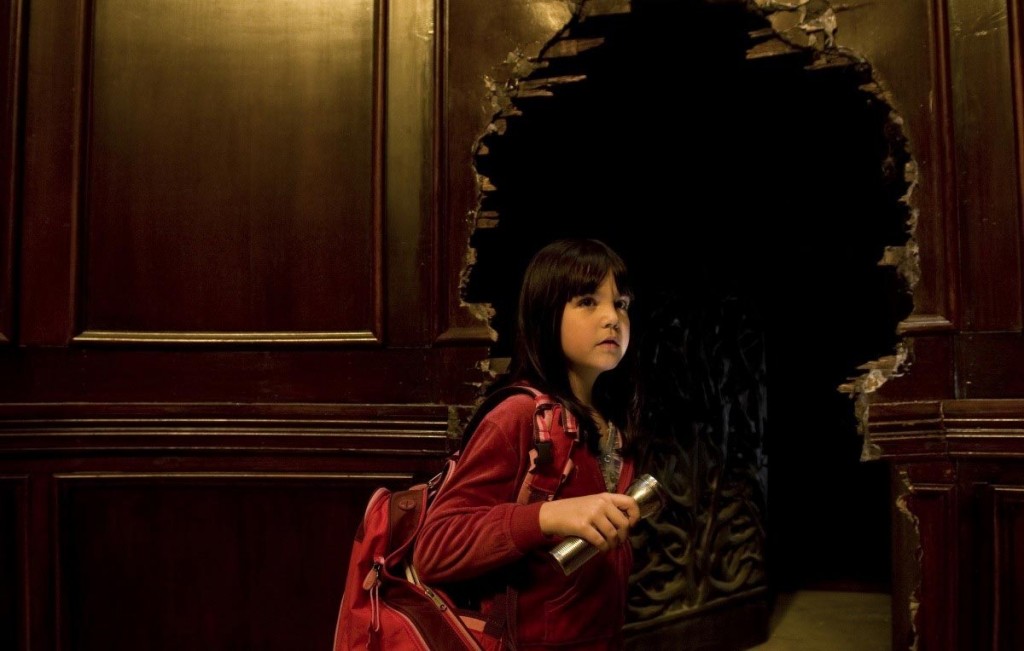Culture
The Bloody Truth: “Don’t Be Afraid Of The Dark”

In The Bloody Truth, Calhoun Kersten looks at the deeper meanings within one of film’s most subtext-heavy genres — horror. Warning: Spoilers ahead.
Horror is in a constant state of flux. Just from the time I was born in 1987, I personally have seen the birth and death of the original slasher franchises (Halloween, Friday the 13th, and A Nightmare on Elm Street) and their subsequent resurrection in the late 2000s, the rise of the J-horror film (American remakes of Japanese imports) and the creation of the torture porn subgenre. While it seems like none of these films have much in common, besides the blanket term of “horror,” these films are indicative of a new trend in the genre. While horror used to be recognized for its dimly-lit hallways and lurking shadows, modern horror has taken a sharp turn toward the aggressive and the obvious.
Audiences are no longer content with what they can’t see. They are no longer satisfied with John Carpenter’s overly-simplified explanation of Michael Myers’ evil. Instead of the one line it was afforded in the seminal 1978 Halloween, it is the subject of great debate and roughly 45 minutes of exposition in Rob Zombie’s 2007 reboot. There is no more appreciation for the mystery of the horror genre. Quite literally everything is on display, from the villains themselves to the innards of their victims.
However, it must be understood that there has been a significant shift in the horror genre to overcompensate for these seemingly drastic changes. For instance, what would Saw be without the deliberate focus on the pain, suffering and bodily harm of its protagonists? If the horror genre was relegated to only these cinematic blood baths, while that may pose a problem for the genre itself, horror would seemingly no longer be in conflict with itself.
As it exists now, horror has two extremes. On the one hand you have literal bloodbaths that seem to bask in the blood of their victims. On the other hand, you have the quieter, more subdued stories, which are frequently and incorrectly referred to as psychological thrillers. While the two can certainly co-exist, horror films are being forced more and more often to try and reconcile the two extremes.
A prime example of this attempt and inability to make peace between the two extremes is the 2011 remake of Don’t Be Afraid of the Dark. The movie follows a young girl, Sally (Bailee Madison), as she moves in with her father (Guy Pearce) and his girlfriend Kim (Katie Holmes). It isn’t long before Sally begins to hear strange voices and see strange things, which causes Kim to worry about the young girl’s safety and sanity. At its core, Don’t Be Afraid of the Dark is equal parts creature-feature and psychological horror film. However, where the film could play with its audience, making us question Sally’s sanity along with Kim, instead it provides too many answers.
It is less than a half hour into the film before we are given our first glimpse of the creatures. Well, glimpse doesn’t seem to be the proper word. We are given a full-body shot of these mysterious beings. Already, the film strips itself of half of its mystery and charm. Whereas other films seem to relish in the unknown, such as the 1963 The Haunting or more recently the 2001 film The Others, Don’t Be Afraid of the Dark falls into that all-too-common trap of showing its hand far too early.
But Don’t Be Afraid of the Dark suffers for more than its obvious scares and poorly-animated creatures. To add insult to injury, the creatures are given a voice. In a film such as this, the creepy whispers and unsettling noises are to be expected. In fact, they’re a necessity. However, the film gives its creatures too many speaking lines. In easily one of the most obvious displays of this problem, there’s a moment when a panicked Sally screams “What do you want?” to the creatures. Instead of letting the audience discover the answer to this question for themselves, the creatures answer, “We want you!” The fact that the creatures provide their own motives in a raspy voice is inexcusable.
While there are a number of films that suffer from the drastic shift in horror from its original air of mystery to its more deliberate explanation of itself, Don’t Be Afraid of the Dark assaults its audience with its failures. It isn’t just that the film isn’t subtle or shows too much. It’s that the film falters when it doesn’t explain itself, but doesn’t have the courage of its convictions to stand on its own. While studio heads seem to see the horror industry (showing too much vs. not showing enough) at odds with itself, in trying to reconcile the two extremes, they create a conundrum within one film. Unfortunately, Don’t Be Afraid of the Dark is that film.